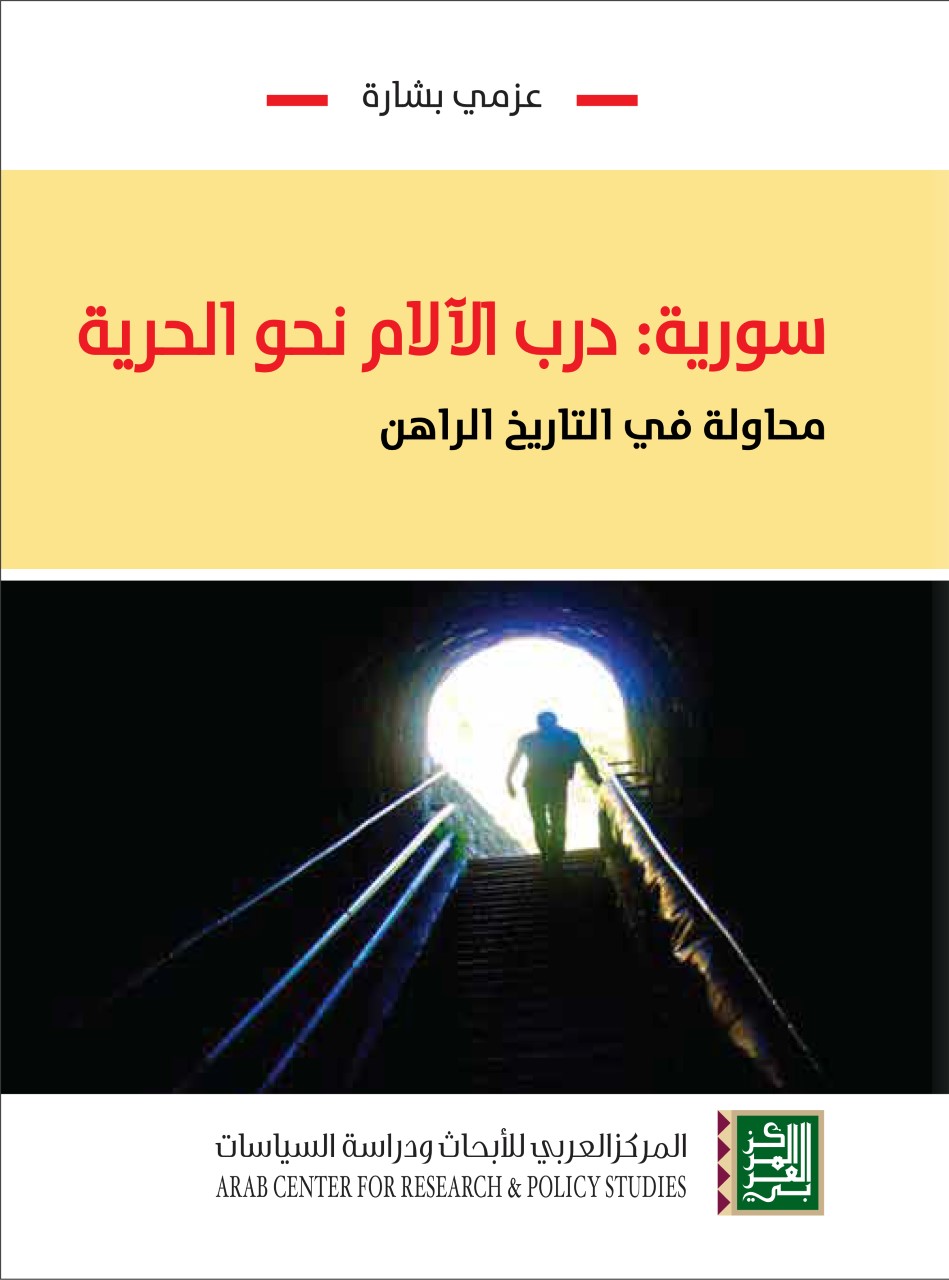Syria-A Way of Suffering to Freedom
Azmi Bishara's new book, Syria-A Way of Suffering to Freedom (2011 - 2013), chronicles the Syrian Revolution, from the day it erupted on March 15, 2011 to March 2013. It is during these two years that Syria's main social, political, regional, and sectarian elements behind the revolution took shape, leading to the bloodshed crippling Syria today and the Syrian's painful path to freedom. In doing this, Bishara historically examines the roots of Syria's political and sectarian conflicts, and sheds light on the country's socio-economic background.
This book represents one of the most comprehensive and profound works published to date on the Syrian Revolution, combining analytical approaches couched in sociology, economics, and history. Within this framework, the book provides only proven facts, avoiding the use of unsubstantiated interpretations. The book thus fills an epistemological and historical gap, providing a distinct method in interpretation, analysis, explanation, deduction, and induction, all of which makes this book a profound, scientific, and vital contribution.
In the book, Syria's revolution is chronicled in two stages: the peaceful civil stage and the armed stage. The author starts with an analysis of the ruthless strategies adopted by the Syrian regime to quell the revolution and its unprecedented use of violence. He then narrates in detail the events that broke out in Syria's major cities, and explores how a peaceful protest turned into an armed struggle. In this book, the regime is clearly held accountable for the current situation. Furthermore, Bishara refutes the popular narrative that the Syrian Revolution is a marginalized rural revolution, and proves that it first started in the urban centers, and later spread to the marginalized rural areas. A valuable insight is also provided on the Baath Party's social base, in what represents a profound reading in this epistemological field, as the author deals with Syria's ruralization process and the subsequent economic "liberalization," which eventually led to the revolt of this base against the Baath party itself.
Bishara's book on Syria presents the harvest of ten years of Bashar Al-Assad's rule, unearthing the first signs of protests that began to emerge in this period. The events in Daraa, and then Hama, Aleppo, Damascus, Raqqa, Deir El Zour, Edlib, and Homs are treated in great detail, with some events and popular theories being validated, while others are denied, by the author. The Syrian regime's strategy and its political and media discourse is carefully analyzed by Bishara, unveiling despotism, massacres, kidnapping, sectarian tendencies, jihadist violence, the emergence of warlords, and the chaotic spread of arms. Bishara then turns to the role of the opposition, the new actors in the Syrian scene, and the international initiatives aiming to solve the Syrian predicament.
"The Syrian regime has to change or the people have to change it," claims Bishara. The author's worst fears lie in the possibility of endless sectarian strife and a sectarian settlement that maintains political quotas for all sects without regime change. He thus calls for a democratic Syria-that is, a state for all citizens without relinquishing the Arab identity for the majority. In this respect, he calls for a settlement that includes the departure of Assad and the preservation of the state. Failing such a settlement, warns Bishara, the revolution will turn into a sectarian and ethnic war, which would render Syria a failed stated even with regime's defeat.
Bishara's new book on Syria is not only an essential read to understand the course of events in Syria, as well as their ramifications and impact on neighboring Iraq to the East and Lebanon to the West, but also serves as a good basis to monitor the revolution's future trends and implications.
Syria-A Way of Suffering to Freedom (2011 - 2013) is available for purchase. Please click here to find the nearest distributor.


